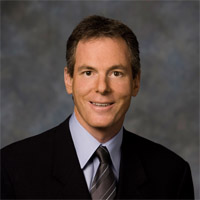  Having consolidated its position in the Indian telecom landscape, telecom technology major Qualcomm is all set to cash in on the upcoming evolution of wireless services domain in the Indian telecom industry. And the intensity of the company’s preparedness for this change can be judged from the fact that it is none other Dr. Paul Jacobs, Chairman and CEO of the company, himself who is in India to spell out the company’s new focus areas as well as initiatives on the services front.
In a meet involving select group of Editors and Analysts, Dr Jacobs unveiled the company’s new business plans under the theme ‘Computing for every Indian’. The theme reflects that the company foresees a strong business opportunity in the wireless data services market, which the company expects, will mainly ride over the 3G backbone in India.
“There is wide gap between the PC penetration in India and the mobile penetration. We expect the wireless medium to drive future uptake of internet reach in India”, said Dr. Jacobs.
He shared some industry forecasts predicting 60 % of broadband subscribers by 2010 to be delivered over the wireless medium. And riding on this demand for internet services over wireless medium, will be the sales of 3G shipments with the 3G-enabled handsets expected to race ahead of GSM shipments by 2010, proclaimed Dr. Jacobs. He further said 3G subscriber base is estimated to grow from the present figures of 830 million to 2.4 billion by 2013. From an Indian perspective, Dr. Jacobs feels that smartphone shipments in India will grow at a CAGR of more than 60% till 2013.
When asked to comment on the kind of business model for operators to adopt to cater to the rural market, Dr. Jacobs stated that the cloud computing mode may fit well into the ecosystem.
The company’s upcoming initiatives to tap the demand for feature-rich computing devices as well services include snapdragon, kayak, gobi and zeebo.
“Affordability at Every tier, Power Efficient, Broadband Built In and Designed for the First Time User are the aspects incorporated by the company while designing solutions and services for India’s computing needs,” concluded Dr. Jacobs. |